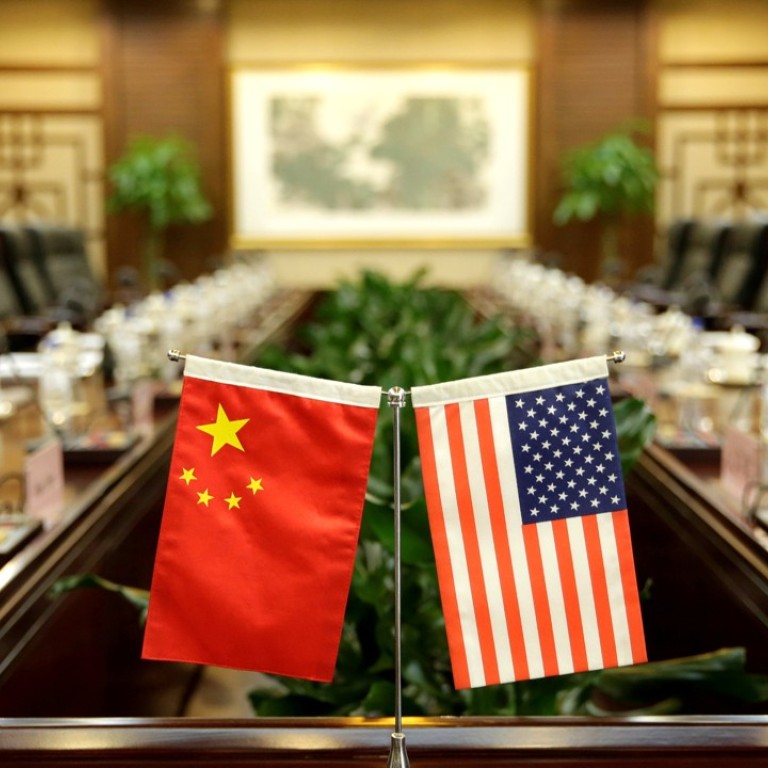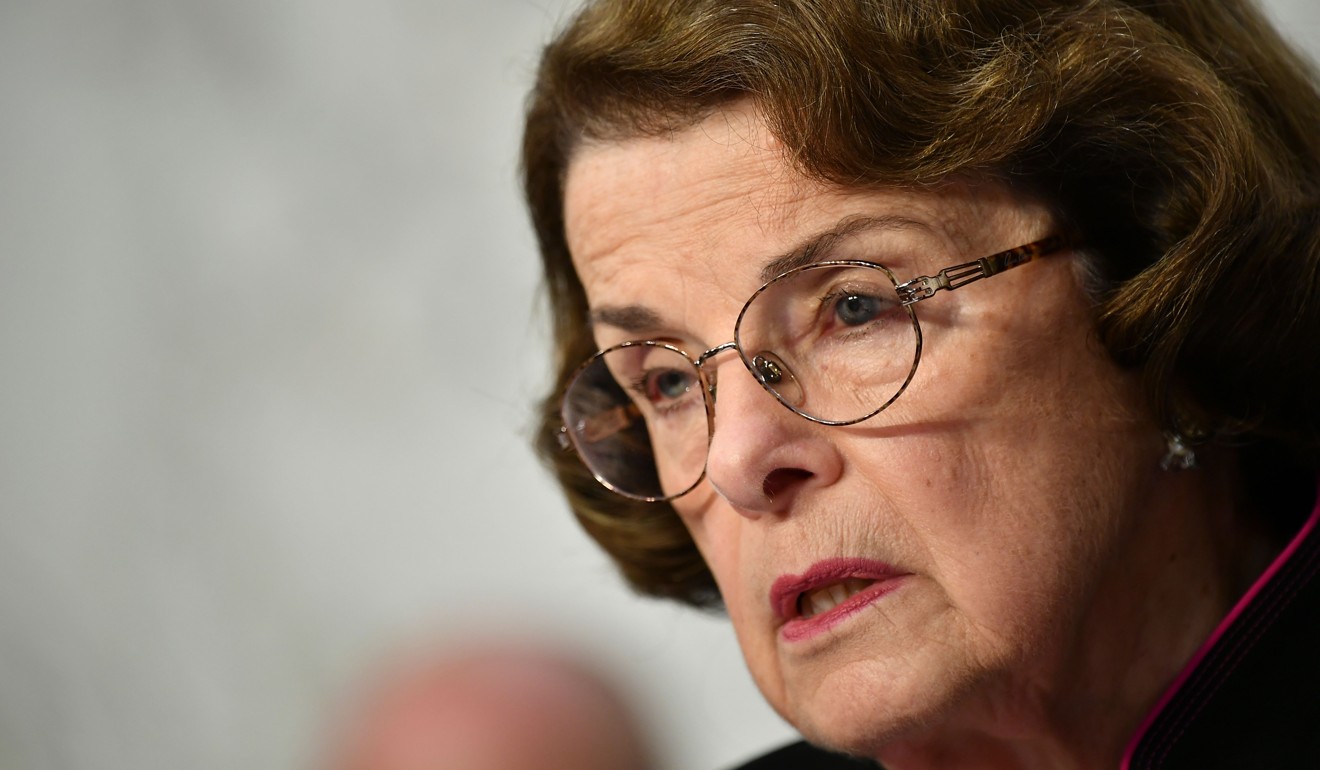
Fast-moving trade war puts asterisk on annual survey of Chinese companies doing business in US
Questions from the China General Chamber of Commerce-USA were submitted before Trump’s tariff announcement – and before Beijing’s response
On the threshold of a US-China trade war, members of the China General Chamber of Commerce’s US chapter (CGCC-USA) are feeling the heat more acutely than most companies.
In a typical year, China watchers could expect to gain insight into how the chamber’s members view the investment environment when industry association releases its fifth annual survey about their business plans on Wednesday.
But the chamber is trying to work around a problem. Events that have shaped the US business environment for Chinese companies have moved too quickly for the survey to reflect the most recent twists and turns.
CGCC-USA represents the US units of global giants including Fosun International, PetroChina and embattled telecommunications equipment maker ZTE, and is trying to perform its role at a precarious moment in international trade.
Washington and Beijing are trying to work through their most fractious differences since the two countries re-established diplomatic relations nearly 40 years ago.
In a bid to counter Beijing’s “Made in China 2025” industrial policy, which directs some US$300 billion worth of capital to domestic companies developing advanced technologies, and to narrow a record trade surplus in China’s favour, US President Donald Trump confirmed on Friday his plan to impose a 25 per cent tariff on US$50 billion worth of Chinese imports.
China quickly responded by announcing an equivalent move on US products.
The resulting tension is likely to affect many companies that rely on US-China bilateral trade and investment, including the 1,500 members of the CGCC-USA, who responded to the survey before a trade war appeared imminent.
China accuses US of igniting trade war with tariffs but there could be more talks ahead
CGCC-USA sent its 140-question survey to members in early February, and most of the responses had come back before Trump announced in late March that he intended to put punitive tariffs on Chinese imports and clamp down on investments in the US by Chinese companies.
Part of that effort includes “specific investment restrictions and enhanced export controls for Chinese persons and entities related to the acquisition of industrially significant technology”, the White House said last month.

“President Trump announced the so-called trade war exactly at the time that we completed the survey,” said Evan Pan, a CGCC associate involved in formulating the questions. “One limitation of the survey this year is the very fast development of sentiments in the US-China relationship were not completely reflected by the opinions of our survey respondents.”
“In order to cope with that, we added a paragraph or two in our survey report” explaining the timing of the questions and the possibility that the responses would not reflect the latest tariff developments, Pan said.
Meanwhile, focus on the Made in China 2025 policy, which provides government support for domestic companies developing next-generation technologies such as 5G telecommunication capabilities and advanced robotics, has grown because the effort was cited by Trump as a rationale for his punitive tariffs.
China ‘ready to hit back’ at Donald Trump’s tariffs
Concern about the policy has driven bipartisan legislation in the US Congress to make Chinese investments in US technologies, particularly those identified by MIC 2025 as national priorities, more difficult.
Passage of the Foreign Investment Risk Review Modernisation Act (FIRRMA), co-sponsored by Republican Senator John Cornyn and Democratic Senator Dianne Feinstein, would require Chinese entities investing in certain US companies not only to submit to a review by the inter-agency Committee on Foreign Investment in the US (CFIUS), but to pay the agency US$300,000 for the work.
The pressure on Chinese companies is not limited to Trump’s determination to rebalance the trade relationship and Congress’ concerns about China’s acquisition of US technology.
How China can hit back in a long, grinding trade war with the US
The US Commerce Department’s decision to hit ZTE with sanctions, which led to a major interruption of the company’s operations, was not related to the type of activity FIRRMA is trying to halt. However, the ZTE situation has riled the same groups in Washington that seek to throw a spotlight on all Chinese companies in the US.
Despite fast-moving events that may not have been reflected in its questions, the CGCC-USA survey should capture at least some of its membership’s reaction to US government moves targeting Chinese companies.
Donald Trump’s US$50b tariffs target Beijing’s ‘Made in China 2025’ tech strategy
“FIRRMA is covered in the survey, and we are confident that our survey reflects our members’ sentiments on the latest developments that might affect their business in the US,” CGCC-USA President Xu Chen told the South China Morning Post.
“In addition, given the somewhat challenging, and at times turbulent discussions/statements over the past year, we believe that our survey accurately portrays a picture of some of the most popularly contested issues,” Xu said.

These issues include the national security strategy Trump delivered in December, in which he accused China of trying to undermine America’s strategic interests, and the start of US Trade Representative Robert Lighthizer’s so-called Section 301 investigation, which was completed last month.
The latter, which included testimony from US companies about how they are forced to transfer proprietary technology to joint venture partners in China, was the basis for the tariffs Trump announced last week.
“Our members are still uncertain as to the degree of impact such proposed actions will have on their businesses,” Xu added. “However, I have no doubt that some Chinese companies are already making preparations, and we have already witnessed some unfortunate shifts in the US-China investment and trade paradigm.”
The main barriers to a US-China trade deal: from US$200 billion deficit cuts to better market access
Investment “from China has decreased, the market has experienced some price increases and the uncertainty has already stalled some projects and cooperation”, Xu said.
Chinese investment in the United States fell to US$29 billion in 2017, down from US$46 billion in 2016, according to data compiled by investment consultancy Rhodium Group and the National Committee on US-China Relations.
“This decline would have been much steeper without the US$18 billion of Chinese acquisitions that were announced in 2016 but completed in 2017,” Rhodium said in a report announcing the new data in April.

